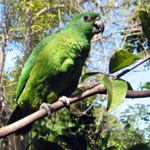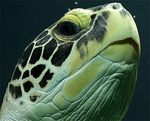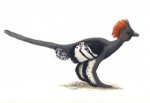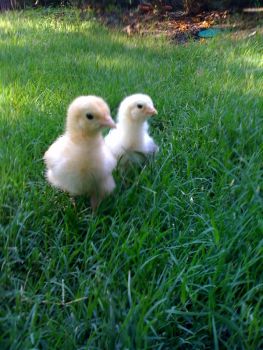Wildlife Doctor’s Reward Is Seeing Patients Fly Away
By Staff Writers
Terra Daily
Veterinarian Belinda Burwell, on one hand, counsels people about how to treat lost or hurt animals they find in the wild. On the other, she takes in orphaned animals as patients at her rural rehabilitation center and heals them so they can again roam free. Every year she sees more animals. “As more areas get developed, more animals are coming in,” Burwell says.

Belinda Burwell releases a barred owl into the wild after it was treated at her animal hospital. (credit: Stephen E. Lee, Washington Post)
Boyce, Virginia – In the enduring battle that pits humans against animals in the wild, veterinarian Belinda Burwell tries to be something of a benevolent referee.
On one side, she counsels people about how to treat lost or hurt animals they find in the wild. On the other, she takes in orphan animals as patients at her rural rehabilitation center and heals them so they can roam free again.
The score is never settled. Every year, she sees more animals — from baby owls to bobcats — attacked by pets, hit by lawnmowers, injured by smashing into glass windows or by tumbling out of nests dislodged when trees get cut down.
“The number of animals we take in is going up every year,”
said Burwell, estimating that the Blue Ridge Wildlife Center she founded in 2004 is now up to about 1,500 patients annually, including skunks, bats, vultures, hawks, raccoons, woodpeckers and turtles.
She will not refuse any animal, except bears, though she admits to once taking in a baby bear just long enough to turn the cub over to the care of state bear biologists.
“As more areas get developed, more animals are coming in,” she said. “Almost every one of these is somehow related to a human event.”
Burwell urges people to leave some natural areas around their homes where cottontail rabbits and box turtles can hide in the tall grass. She also bemoans the damage wreaked by outdoor cats.
“Once a cat grabs an animal there will be tiny puncture wounds we don’t see so you have to put them on antibiotics for a couple of days,” she said.
Without any government funding to support her efforts, Burwell relies on private donations to bankroll the center, which costs $100,000 a year with one other paid staff member and otherwise relies on a rotation of unpaid volunteers.
Burwell studied to be a zoo wildlife veterinarian but ended up going into emergency pet medicine and doing wildlife work on the side. It’s a job she describes as “thankless” but also “so badly needed.”
“I live next door, so I take calls in the middle of the night,” she said.
According to wildlife rehabilitator Amber Dedrick, keeping baby birds alive is hard work for humans.
“They have to be fed about every 20 minutes all day long,”
she said, squeezing special high-protein bird formula from a dropper into two-week old robins’ open beaks.
“It is not something you want to do at home. It is very time-consuming,” Dedrick said.
“Usually we tell people if you can safely reach the nest it is always best to put them back if you can.”
Otherwise it may be best to leave fallen baby birds where they are because their parents will likely come by and feed them.
The childhood of a bird is quite short — often chicks are ready to leave the nest in just a few weeks after hatching.
But during that time they are particularly impressionable, so when a quartet of fuzzy baby screech owls came in, Burwell knew she had to keep her distance so they would not come to recognize her as their human mom.
“We are very careful when we feed them,”
she said, covering her head with a black hat with cascading dark mesh that obscured her face before feeding bits of chopped up mouse meat to them with a long set of tweezers.
“We don’t let them see our faces. We don’t talk. We don’t want them to associate food with people,” she said.
“This way, they will learn to be screech owls. They won’t learn to be people.”
The center tries to shepherd orphans in with adults of their own species once they are weaned, so that they can learn from these surrogate parents how to survive in the wild.
“We get our rewards by watching them fly away,” said Burwell.
Wildlife rehabilitation is most common as a profession in developed countries such as the United States, Canada, Australia, Ireland, Britain and Singapore, said Kai Williams, director of the International Wildlife Rehabilitation Council.
“I receive emails from college students all over the world interested in breaking into the field,” said Williams.
Raising enough cash and navigating sometimes complicated licensing procedures are among a rehabilitator’s main challenges.
But Burwell may be a member of a dying breed.
According to the National Wildlife Rehabilitators Association, which has about 1,700 members, their numbers are falling in the United States as the economic downturn puts a squeeze on charitable giving.
“People can barely keep themselves afloat, so a lot of it is just cost,”
said NWRA president Sandy Woltman, estimating about a 10-15 percent drop in licensed rehabilitators over the past 10 years.
“There is also a burnout rate. There is a lot of death and suffering that they see, and a lot of long hours.”
Nicholas Vlamis, who manufactures a range of baby formulas for antelope, moose, ferret, wolves, birds and bats, said people who do this line of work are not in it for the money.
“They are small in numbers but big at heart,” he said.
Source: Terra Daily
Photo added by Haiti Chery







Comments
Wildlife Doctor’s Reward Is Seeing Patients Fly Away — No Comments